
In its quest to offer an electric vehicle (EV) option to suit everyone on the planet, Tesla has expanded the size and scope of its carbon-conscious repertoire over the past 17 years. Tesla currently manufactures two sport utility options – the mid-sized offensive lineman of the Tesla family, the Model X, and the new(er) crossover kid on the block Model Y. Below is a side-by-side matchup of both Teslas to help you decipher which option may be better for you.
What is Tesla Model X?
Tesla’s Model X, its largest EV available, currently holds seniority as the automaker’s second-longest running model on its assembly lines behind the Model S. While the Model X was originally unveiled in 2012, its first deliveries were not until the fall of 2015 due to production delays, particularly on its distinct Falcon Wing doors. Shortly thereafter, the Model X quickly ranked as one of the top-selling plug-in EVs worldwide, although sales have since staggered a bit. This is due to Tesla’s release of two smaller and less expensive EVs in the Model 3 sedan, and the X’s brand new counterpart, the Model Y.
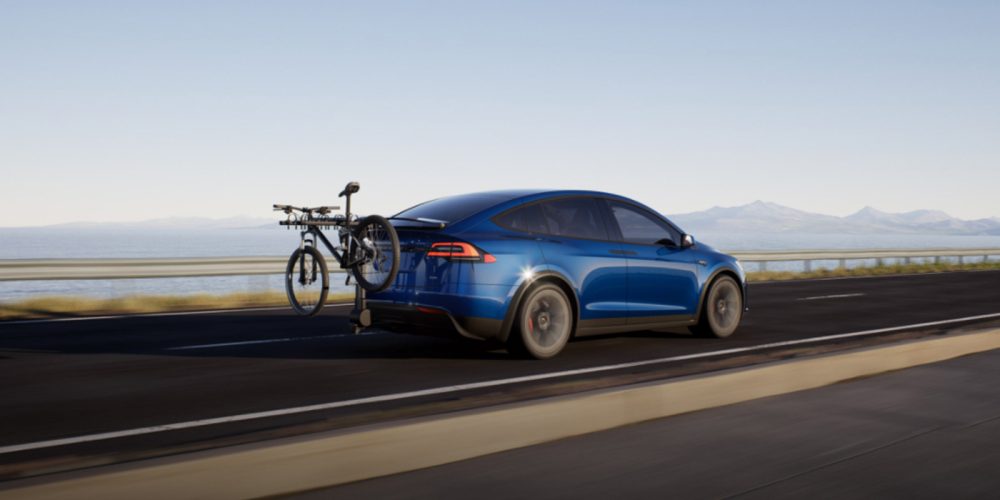
Previously, Tesla announced it would be conducting an extended shutdown of the assembly lines of its Model S and Model X EVs into the new year. Electrek’s own Fred Lambert had some interesting insight:
It’s not unusual for Tesla to shut down production lines during the holidays, but this 18-day shutdown is longer than usual and not the same as Model 3 and Model Y production…
…Tesla didn’t tell Model S and Model X production line employees the reason behind the extended shutdown, but it is adding to the rumors of a design refresh for Model S and Model X.
Compared to Tesla’s other EVs in the fleet, the Model X saw minimal upgrades in 2020. With that said, Tesla did finally announce a 2021 refresh to the Model X SUV and Model S sedan.
What is Tesla Model Y?
The Model Y, which was first delivered in March 2020, remains Tesla’s newest EV to roll off the assembly lines worldwide. Although it is a smaller and more streamlined version of the veteran Model X, the Model Y shares more of its mechanical makeup with the more recent Model 3 sedan.
A refresh on the Model Y for 2021 was minimal since the EV hasn’t even had a first birthday yet. However, this past fall, Electrek did discover a recently delivered Model Y and was able to confirm a few upgrades. Images of the new model revealed auto-dimming mirrors, laminated window glass, and metal scrolls on the steering wheel. Additionally, the new Model Y came with a USB port in the glovebox, complete with a Tesla branded storage device to save data for features like Sentry mode or a TeslaCam.
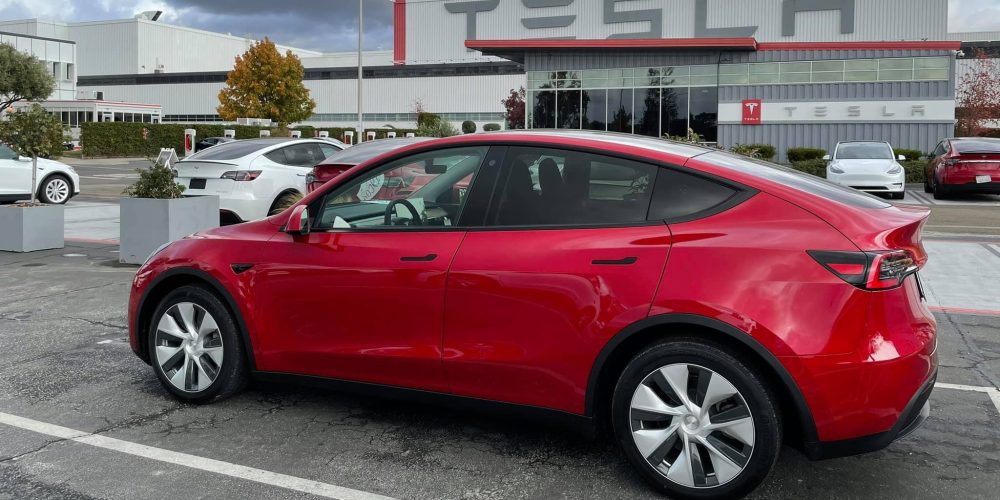
One last feature customers will have to continue to wait for is a seven-seat interior. While the third row of seats couldn’t be completed in time for the Model Y’s initial launch, CEO Elon Musk stated that deliveries would begin in early December. December came and went, but Tesla has finally added the seven-seat option to its purchase page in 2021. It is currently only available on the Standard and Long Range trims, however, not the Performance Model Y.
Performance
While these Tesla vehicles offer the most cargo room in the current lineup, they also sport more than adequate performance specs. Sure, they may not be quite as quick off the line as their sedan counterparts, but both the Model X and Model Y EVs pack an electric punch in range and speed. Here’s how they size up.
Model X
We will start with the older of our two Teslas, the Model X. Currently available in one dual motor, all-wheel drive (AWD) version, and a new tri motor Plaid powertrain, the Model X has much to offer. The Model X Long Range prioritizes mileage on top of 91 cubic feet of cargo space. At a 360-mile range, this Tesla lost 11 miles compared to its previous version. However, it can still reach a top speed of 155 mph and has shed six-tenths of a second in its 0-60 acceleration at 3.6 seconds.
The Performance trim Model X has been dropped in return for a new tri motor Plaid trim. The Plaid Model X can travel an EPA-estimated 349 miles, top out its speed at 163 mph, and can zoom 0-60 mph in 2.5 seconds. This may be Tesla’s largest and heaviest EV so far, but it can still hang on the track for sure.
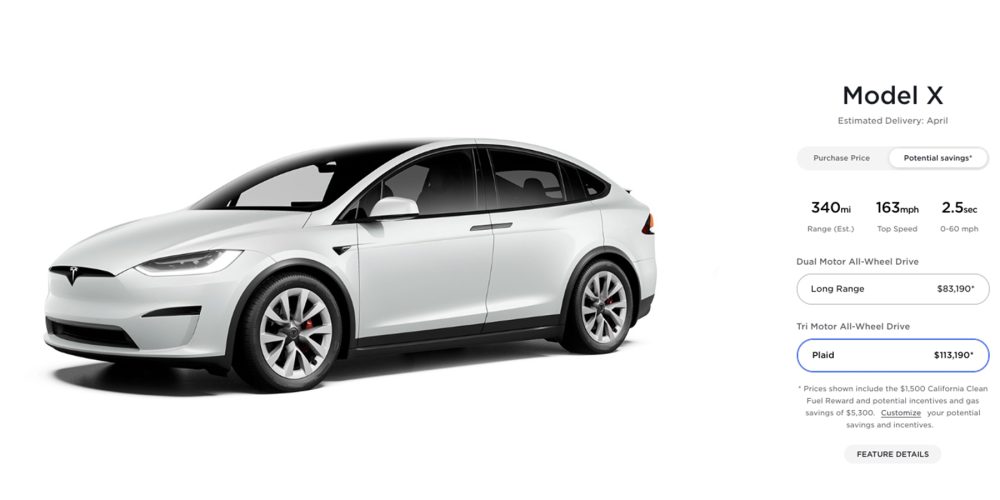
Model Y
The Model Y sacrifices a bit of performance to offer better pricing for customers (see our pricing breakdown below). With that said, the Model Y still has plenty to offer drivers in speed and range. Most recently, Tesla launched a Standard Range RWD version of the Model Y on its website. This single motor option can travel 244 miles on a single charge, hit a top speed of 135 mph, and travel 0-60 mph in 5.3 seconds. Almost as quickly as it was implemented, the Standard Range Model Y suddenly disappeared from Tesla’s website configurator. Electrek later reported that the RWD Model Y will instead remain available as an “off menu” item, because Musk was not satisfied with its range. Its future remains uncertain, although the Standard Range recently received its official EPA rating as one of the most efficient EVs in the world.
Like the Model X, the Model Y offers two versions with dual motor AWD in a Long Range or Performance trim. The Long Range Plus can travel an EPA-estimated 326 miles on a single charge while reaching a modest top speed of 135 mph. Additionally, it can travel from 0-60 mph in 4.8 seconds – four-tenths of a second slower than the Long Range Plus Model X with 20 mph less top speed.
Tesla’s Performance Model Y offers less range at 303 miles per charge, but can hit a top speed of 155 mph. This trim can travel 0-60 mph in 3.5 seconds, although that is still slower and less of a top speed than its Model X counterpart by quite a bit. Overall, the Model X offers more range, top speed, and acceleration for either trim when compared to the Model Y.

Additional features
While both Tesla vehicles could be classified as SUVs, they share more features with their respective assembly line sedan counterparts i.e., the Model S and Model 3. There are certainly similarities between the Model X and Model Y, however. For example, both come with premium audio systems, LED fog lamps, power folding, auto dimming, heated side mirrors, and custom driver profiles. Both Tesla vehicles also come with a tow hitch option, although it currently comes standard on all new Model Xs. As for the Model Y, you can add a class II steel tow bar and hitch, capable of towing up to 3,500 lbs for an extra $1,000.
Other similarities
The two Tesla vehicles are similar yet different in other ways, too. With its new refresh, the Model X has adapted the completely glass roof from the Model Y. This offers ultraviolet and infrared protection for passengers. Each of these Tesla models are rather unique as well. While the Model Y comes with all-black interior included, the Model X ups the ante with carbon fiber included on top of the all black trim. The Model X includes futuristic-looking yoke steering, and has turned its 17-inch touchscreen (2 inches larger than the Model Y) horizontal. The Model Y features a center console with storage, four USB ports, and docking for two smartphones. Not to be outdone, the Model X refresh now includes a second touchscreen for its rear passengers.

Differences
Although the Model X is the older Tesla, it still has a couple features not yet available in the Model Y. For example, the larger EV features tools to fight the elements such as heated seats for each passenger, heated steering wheel, wiper blade defrosters, and washer nozzle heaters. The Model Y also has new tools to perform in colder climates as well, as it was the first of Tesla’s fleet to feature the automaker’s self-designed heat pump, offering extended range. It’s important to note that the heat pump was adapted to the new Model X as well, and is now present in all four of Tesla’s current vehicles.
One feature the Model X currently holds over its smaller counter part is Bioweapon Defense Mode featuring a HEPA air filtration system. This tool helps prevent viruses, bacteria, and offensive odors from entering the cabin (relevant during a global pandemic). This tool is not yet listed as a feature on the Model Y, but Electrek has previously reported that it may be coming soon. Finally, the Model X wins in cargo space. With a best-in-class storage of 91 cubic feet, the Model X tops the Model Y by 23 cubic feet.
All in all, both Tesla vehicles are loaded with features to offer both safety and comfort while riding. It’s a bit of a toss-up as to which model is better. It all depends on what you prefer and what sort of weather you will be traveling in. Both options have plenty to offer without even getting to the add-ons, but the Model X certainly offers more room.
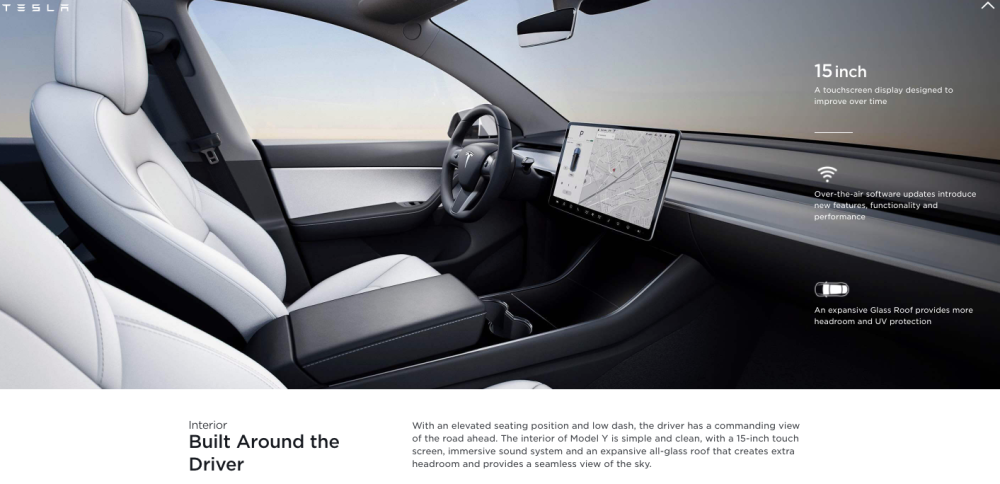
Pricing
One major way the Model X and Model Y vary is in the checkout line. As a customer, you could most likely find the features or drivetrain to suit your needs in either model, but when it comes to final price, that might end up being the ultimate deciding factor. The prices below are listed to offer both the lowest and most expensive versions of each model from the standard bare-bones EV to all available features added. This way, you will have a good idea of the very minimum or maximum you would need to spend on your ideal Tesla. Note that these prices are current at the date of this post, and we will update them for you as they change. All prices do not include the additional $1,200 for destination and documentation fees.
Model Y
Let’s begin with the Model Y. As the second-most affordable Tesla option to date, all three options for the Model Y will be less expensive than the Model X. The”off menu” Standard Range RWD trim begins at a purchase price of $39,990 without any incentives or rebates. If you were to add all available features such as red paint, custom interior, and the recently available seven-seat interior, you’re looking at an all-in price of $57,490.
The Long Range trim starts at a base price of $50,490 and rises to $69,490 with every added upgrade. This includes an extra $1,000 for the previously mentioned tow hitch, $2,000 for 20-inch Induction Wheels, and an extra $10,000 for full-self driving (FSD) capabilities.
The Performance Model Y starts at $60,990 and expands upwards to $74,990 when fully loaded. This version includes all the same added features in addition to included 21’’ Überturbine Wheels. Overall, a brand new Model Y will cost roughly $40,000 minimum and can get up to almost $75,000 fully stocked. These prices are the full purchase price listed on Tesla’s website and are before any gas savings or state tax incentives.
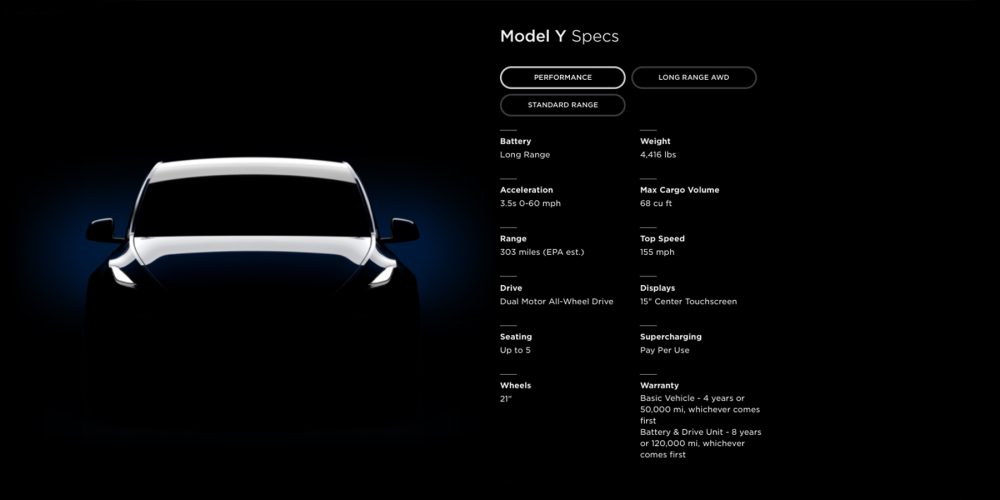
Model X
Beginning the with less expensive Model X Long Range trim, the bare-bones version including white paint and zero added features starts at $89,990. If you were to add all the most expensive additional features including red paint, 22-inch Turbine Wheels, and FSD capabilities, the price can reach $116,490. This top-end price includes the more expensive six-seat interior with captain’s chairs for $6,500. If you prefer the seven-seat row, that option will cost $3,000 less.
The new Plaid Model X begins at $119,990 and can go as high as $146,490 including the same wheels and six-seat interior. For those keeping score, the most basic Model X will cost you about $90,000 and can eclipse $146,000 souped up.
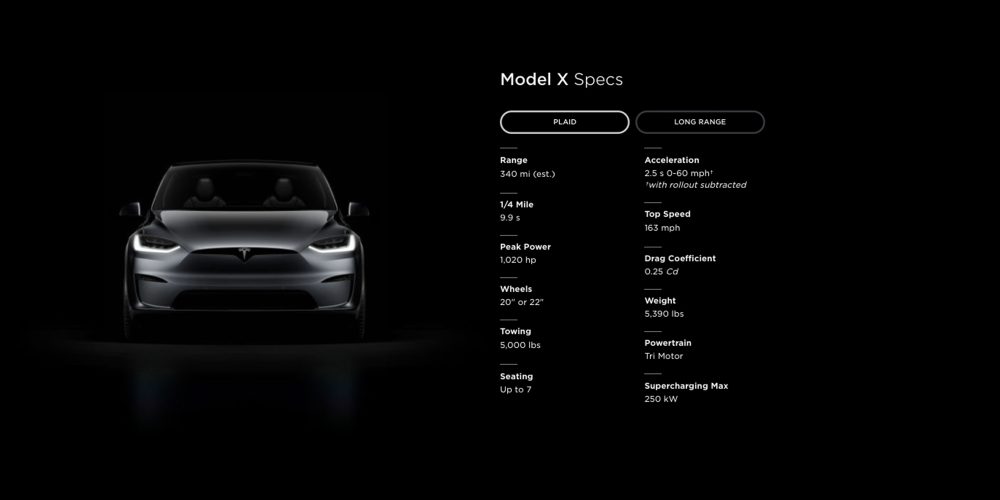
Which is better, Tesla’s Model X or Model Y?
That’s difficult to determine and certainly subjective, depending on who is buying. The Model X offers more cargo room, mile range, speed, and acceleration, but for $50,000 more than the Model Y… minimum. The Model Y is complete with new and exciting features including the new Standard Range RWD trim. Even at its most expensive version of the Performance trim, it’s still $15,000 less than a bare-bones Model X Long Range and more than $45,000 less than a standard Model X Plaid. Price plays a huge factor in deciding which of these two Teslas are best for you, but generally speaking, the Model X offers more at a higher price while the Model Y offers more value in purchase price, leaving room for more additional features.
Subscribe to Electrek on YouTube for exclusive videos and subscribe to the podcast.
Author: Scooter Doll
Source: Electrek



